
The Bash Street Kids is a comic strip in the British comic magazine The Beano. It also appeared briefly in The Wizard as series of prose stories in 1955. The strip, created by Leo Baxendale as When the Bell Rings, first appeared in issue 604. It became The Bash Street Kids in 1956 and has become a regular feature, appearing in every issue. Since 1961, David Sutherland has drawn about 2,100 strips.

Gnasher is a fictional comic strip character that appears in the British comic magazine The Beano. He is the pet dog of Dennis the Menace, who meets him in 1968's issue 1362, and is also the star of three spin-off comic strips. Gnasher is considered just as iconic as his owner as both have been the stars of many children's television programming and are the unofficial mascots of The Beano. Gnasher reached nationwide news in the 1980s after he disappeared from the magazine for seven weeks, returning with his six newborn puppies, but usually interacts with his son Gnipper.
Enn Reitel is a Scottish actor who specializes in voice work. He is known for his voice-over work in video games, movies and TV shows. He is also known for providing additional voices for The Getaway: Black Monday, The Lord of the Rings: Aragorn's Quest, Kingdoms of Amalur: Reckoning, The Secret World and Star Wars: The Old Republic – Rise of the Hutt Cartel.
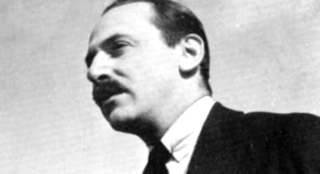
Nathanael West was an American writer and screenwriter. He is remembered for two darkly satirical novels: Miss Lonelyhearts (1933) and The Day of the Locust (1939), set respectively in the newspaper and Hollywood film industries.
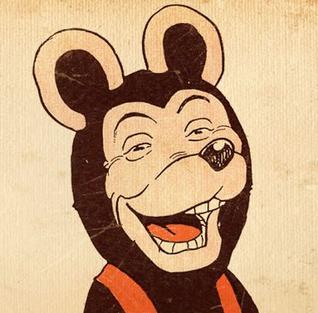
Biffo the Bear is a fictional character from the British comic magazine The Beano who stars in the comic strip of the same name, created in 1948 by Dudley D. Watkins. He was the mascot of The Beano for several decades.
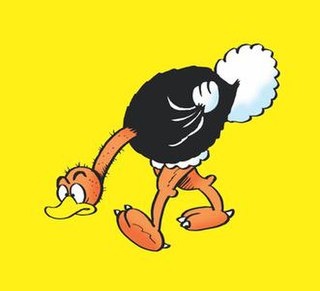
Big Eggo was a British comic strip series about an eponymous ostrich, published in the British comic magazine The Beano. He first appeared in issue 1, dated 30 July 1938, and was the first ever cover star. His first words in the strip were "Somebody's taken my egg again!". It was drawn throughout by Reg Carter.
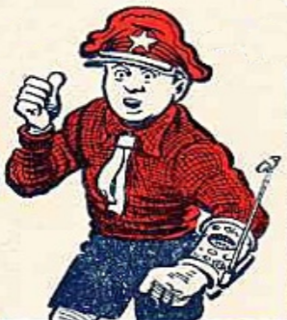
General Jumbo is a British adventure story character from the comic magazine The Beano. He starred in the eponymous adventure story series, as well as the 1971 spin-off series Admiral Jumbo, and was illustrated by a variety of Beano's usual illustrators, including Paddy Brennan. Jumbo is a well-known Beano character with numerous references in popular culture, and was the last character to have an adventure stories series.

Joe King was a fictional character in a comic strip in the UK comic The Beano. He first appeared in The Beano in issue 2783, dated 18 November 1995. His name was a pun on "Joking."

Billy Whizz is a fictional character featured in the British comic The Beano, first appearing in issue 1139, dated 16 May 1964, when it replaced The Country Cuzzins. Billy, the title character, is a boy who can run extraordinarily fast. His speed often causes chaos yet at the same time his ability can prove useful. He also has a younger brother called Alfie Whizz of similar appearance. Alfie is usually shown as a normal boy but occasionally he is shown to be just as fast as his brother.
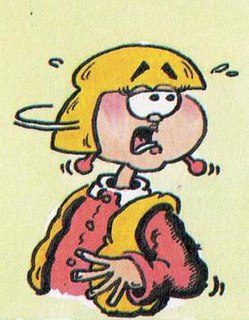
Crazy for Daisy was a British comic strip published in the magazine The Beano. It was created and drawn by Nick Brennan and made its debut in issue 2865, dated 14 June 1997. It was part of an ongoing selection of six comic strips that were to be voted into the comic by readers. This strip was the winner, beating Camp Cosmos, Have a Go Jo, Sydd and Trash Can Ally.

"The Sandman" is a short story by E. T. A. Hoffmann. It was the first in an 1817 book of stories titled Die Nachtstücke.
Jean-Patrick Manchette was a French crime novelist credited with reinventing and reinvigorating the genre. He wrote ten short novels in the seventies and early eighties, and is widely recognized as the foremost French crime fiction author of that period. His stories are violent explorations of the human condition and French society. Manchette was politically to the left and his writing reflects this through his analysis of social positions and culture.

Albertine disparue is the title of the sixth volume of Marcel Proust's seven part novel, À la recherche du temps perdu. It is also known as La Fugitive and The Sweet Cheat Gone.

"Herbert West–Reanimator" is a horror short story by American writer H. P. Lovecraft. It was written between October 1921 and June 1922. It was first serialized in February through July 1922 in the amateur publication Home Brew. The story was the basis of the 1985 horror film Re-Animator and its sequels, in addition to numerous other adaptations in various media.
Morgyn the Mighty is a British action-adventure comic strip about a super-strong shipwreck survivor. The strip debuted in 1928, created by Dudley D. Watkins, and continued to be published until about 1968.
I Stole a Million is a 1939 film noir crime film starring George Raft as a cab driver turned small-time crook who makes a big score and lives to regret it. The supporting cast includes Claire Trevor, Dick Foran, and Victor Jory. The movie was written by Nathanael West based on a story idea by Lester Cole, which in turn was based on the life story of bank robber Roy Gardner. It was directed by Frank Tuttle, and released by Universal Pictures.
An impostor or imposter is a person who pretends to be somebody else.
"Western Union Boy" is a short story written by Nathanael West in the early 1930s; it was not published in West's lifetime and appears only in the Library of America edition of his collected work: Novels & Other Writings.
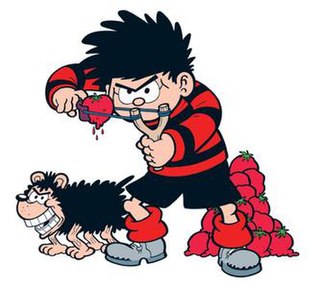
Dennis the Menace and Gnasher is a long-running comic strip in the British children's comic The Beano, published by DC Thomson, of Dundee, Scotland. The comic stars a boy named Dennis the Menace and his Abyssinian wire-haired tripe hound Gnasher.
Gary David Grant, known professionally as Gary Martin, is a British actor who has been in the acting industry since the early 1980s. His first recorded acting credit is as a chauffeur in the television series Nobody's Perfect. He has since gone on to perform in over 60 roles, either as a voice actor or actor. Martin is well known for his vocal range, and has recorded voiceovers for multiple American and British commercials and film trailers.